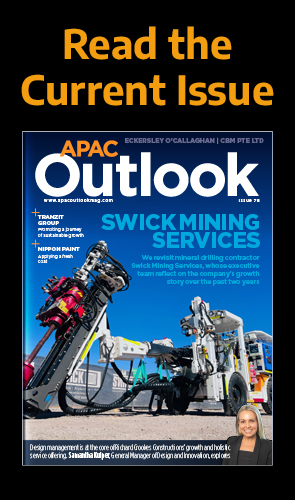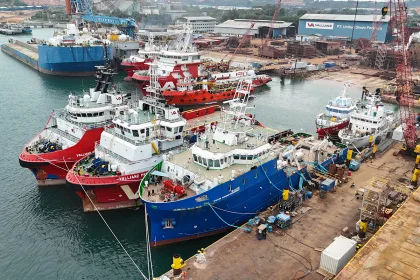EME Outlook Speaks to David Lin, the Business Development Director of Communications for OEM Solutions at Dell EMC, about Asia’s optimistic 5G forecast.
- Q&A WITH DAVID LIN, DELL EMC
- How, in your opinion, should we define 5G?
- Generally speaking, are businesses willing and/or able to adopt new technologies such as 5G?
- Equally, how have data specialists such as yourselves responded to the new challenges posed by 5G?
- Can you provide forecasts on the uptake of 5G amongst enterprises in Asia in particular? Will we see much progress over the course of 2019?
- Further, are there any 5G-related technological trends of note that you believe will be particularly transformative for early adopters during the coming years?
Asia Pacific is a region on the up, a statement no better reflected by its rising emphasis on new technologies.
According to GSMA, for example, APAC is expected to become the world’s largest 5G region by 2025, led by several prosperous and pioneering markets such as Australia, China, Japan and South Korea.
What’s more, Asia’s mobile industry added more than $1.5 trillion in economic value to the continent during 2017, figures that will remain on the up as 5G moves from concept to reality, with CommScope forecasting that service operators will invest almost $200 billion over the coming years.
Speaking with David Lin, Dell EMC’s Business Development Director of Communications for OEM Solutions, the Hong Kong-based employee is quick to highlight to us that both he himself and the wider company are optimistic when considering such forecasts.
Presented to you in a Q&A below, we discuss with Lin how 5G is expected to broadly impact the entire continent and how Dell EMC itself is helping to facilitate some of these core, transformative progressions.
Q&A WITH DAVID LIN, DELL EMC
How, in your opinion, should we define 5G?
David Lin (DL): 5G networks will extend virtualisation into the radio access network and network edge, virtualising the network core, extending end-to-end overlays for network and service slicing. 5G is a new foundational architecture which will be part of a rebuild of cellular networks, representing an important pivot which will be the first end-to-end architecture that is fully software-defined from the radio through the core.
Essentially, the concept of 5G is not an evolution from our current band of 4G networks, but it requires massive transformation, demanding new distributed architectures that leverage software-defined infrastructure in order to automate delivery of mobile services, and new improved analytics-driven telemetry to ensure consistent service levels.
Generally speaking, are businesses willing and/or able to adopt new technologies such as 5G?
DL: Businesses are willing to adopt new technologies such as 5G as it will provide richer experiences and outcomes for consumers, businesses, and service providers. The impending 5G transition will improve operations and processes in an unparalleled manner, driving speed, connectivity, and premium user experiences, improving business offerings, monetising user data by gaining a deep understanding of customer bases and an improvement of services, and enabling more real-time, immersive services.
Whilst research suggests more organisations intend to deploy 5G in the coming years, there still needs to be an evolution in the technical and operational standpoint for organisations who want to deploy 5G networks.
New platforms will also be needed for the future 5G network, which will require workload execution platforms that are flexible, and can bring together IT, services, and workload management. This includes mobility capabilities at levels of scale and concurrency that require increased embedded logic, intelligence, and automation across diverse administration domains and technology types.
Tomorrow’s 5G infrastructure requirements, with an emphasis on multi-factor, distributed, workflow-based deployment in an efficient and agile manner, look a lot like today’s large-scale IT cloud solutions. As businesses want to rapidly deploy their services into a 5G environment, where they previously did so into the cloud, this will require more openness in terms of access to current infrastructure, where new customer relationships need to be formed.
Equally, how have data specialists such as yourselves responded to the new challenges posed by 5G?
DL: We live in a time where huge amounts of data are required to compute, and in our recent Dell EMC Global Data Protection Index research, it was revealed that organisations in the Asia Pacific and Japan region managed 8.13 petabytes (8,130,000 gigabytes) of data on average in 2018, which grew by a massive 384 percent from 2016 (1.68 petabytes).
In light of the oncoming age where we see an explosion of data being managed by businesses, this presents a great opportunity for enterprises across all industries to evolve and take massive steps forward in their digital transformation journey – opportunities which will be imperative in light of 5G supporting data-heavy workloads.
5G, a once-in-a-decade transformation of the mobile platform, will manifest itself alongside digital transformation, IT transformation, workforce transformation, security transformation, and will require solutions that are open, standards-based, multi-cloud, scalable, secure, virtualised, automated, edge-enabled, and intelligent. From device to edge to core to cloud, capabilities must be omnipresent and ubiquitous, which is what Dell believes will enable businesses to thrive.
As an infrastructure technology vendor, we see ourselves as a facilitator of 5G, and through our partnerships with customers and service providers, our product portfolio helps bring the best of IT, service and workload management and mobility capabilities together under one unified, validated platform. For instance, under the Dell EMC Technologies family of brands, we partner with VMware to provide our customers with validated solutions around edge computing, IoT, 4G/5G architectures and solutions to accelerate mobile rollouts, simultaneously reducing associated technology and integration risks.
We believe that there will be no one-size-fits-all solution, and each service provider will undertake their own digital transformation journey at their own speed, and we have been working with service providers to address specific requirements across their multiple architectures and business models. Our portfolio of products provides solutions across IoT, network edge and the cloud, enabling our clientele to realise their 5G journeys.
Can you provide forecasts on the uptake of 5G amongst enterprises in Asia in particular? Will we see much progress over the course of 2019?
DL: We are already seeing the roll-out of commercial 5G networks in the region, in countries such as Korea, Japan, the Philippines and Australia, and it is not unreasonable to expect the regional uptake of 5G in the private sector to grow as well in the next few years. In fact, GSMA Intelligence’s latest Mobile Economy Asia Pacific report predicts that the Asia region will account for more than 50 percent of 5G networks by 2025, which will reach at least 675 million people.
As the region begins to adopt 5G publicly, this will mean that governments will be trialling best-use cases and coming up with policies and safety guidelines in order to ensure that new networks will be safe and secure for all to use. I predict more coming out in the pipeline for 5G networks and associated adoption as competition ramps up.
Further, are there any 5G-related technological trends of note that you believe will be particularly transformative for early adopters during the coming years?
DL: As technology innovates, this will impact our lives positively and improve processes that shape our everyday lives. We have already witnessed these changes, some trends we can take note of being enhanced mobile broadband services, connected cars, smart retail, drone delivery services, industrial robots and machine learning.
These technologies are already well underway, and we will see more of these emerge in the future. What was previously unthought of in science-fiction movies may soon be a reality – with millions of devices consuming and generating data, we are already seeing autonomous drones, driverless vehicles and seamless machine-to-machine interactions across the globe.
As cities continue digitalising and becoming smarter, a breadth of new transformative solutions will also come to the fore in services. Think of solutions such as streetlights equipped with facial recognition surveillance cameras in Singapore, the implementation of smart trash cans in Seoul which utilise real-time monitoring to cut out waste collection, or the world’s first drone food delivery business in Australia. As cities evolve, rising IoT and wireless connectivity will drive improvements in future technologies, and this trend will only continue in the years to come as 5G networks become a reality and allow more data-driven technologies to come to fruition.




































